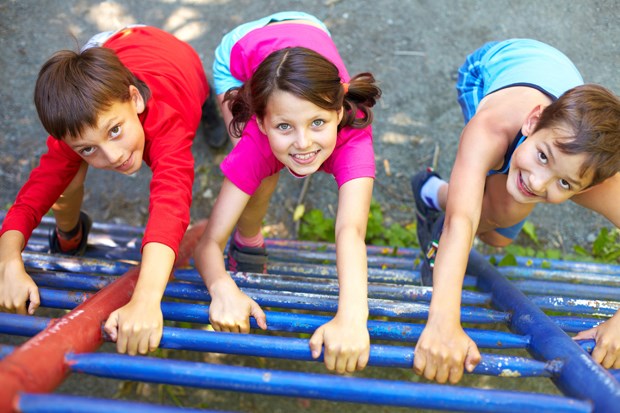Do you have a child who is always bumping into things, spilling his milk and dropping his toys? Relax, he's typical.
Many children between two and six are clumsy. They are developing their co-ordination and are not yet skilled at handling themselves or their things.
It's more obvious when a child is going through a growth spurt. Think about it: when a child is growing they are not clear on where their arms and legs begin and end because the length of their limbs is changing.
For the same reason, clumsiness is also a problem for teens. No one changes as dramatically as a toddler or teen. So the trick is to figure out ways to be helpful.
With your little ones provide safeguards - padding on furniture edges they may crash into and cups with lids and plastic dishes. Put all your precious breakables out of reach until they're able to handle them with care.
Help her develop grace by enrolling her in gymnastics, dance or a sport. Almost any activity will aid a child in developing motor skills. But make sure it's a fun activity. If they're going through a clumsy stage, it's not a good idea to get them involved in a competitive arena where they are likely to stand out as a failure.
You can accomplish the same thing at home by taking them swimming, tossing a ball around or dancing together in the living room. It's fun and good exercise for both of you.
Interestingly, toys and games that focus on small motor skills will also help large motor skills. So puzzles, sticker books or playdough are great ways to allow her to develop the skills and have fun at the same time.
If your child seems excessively clumsy you will want to have her checked out by a health-care professional to see if her clumsiness is a result of poor vision or motor development problems.
One of the offshoots of clumsiness can be breakage. So what do you do when he breaks your lamp?
First, find out why. Kids don't break things on purpose, so was he just careless, angry or distracted? Or was he trying to do something he just hasn't the skills to accomplish? Once you know the reason it's easier to move forward and deal with a solution.
While you acknowledge that it was an accident, he still needs to take responsibility for his actions. If he's old enough, have him do the research to find out the value of the item. He can do a search online or call the stores. If he's too young for this, you can do the online search and show him the results.
It's up to you to figure out whether he will pay the whole cost of repair or replacement. It really depends on how much money he has access to, his age, the cost and the reason he had the accident. Whatever you decide, be clear with him that even when there is an accident you do have to take responsibility for your actions. If he was trying to do something for which he lacks the skills, like getting food out of the cupboard by climbing on the counter, it may be a sign that he's ready to accept more responsibility and wants to become more independent. Help him learn how to do more for himself in a manner that is safe and effective.
When it's your teen who is clumsy, it's important to avoid teasing him. Let him know that growing and changing is tough and that you understand how challenging it can be for him to have his body changing so quickly. Just acknowledging his reality will be helpful because teens going through growth spurts often feel totally out of control and wonder when it's going to all stop.
When we look at clumsiness through the eyes of our children it's easier to support and help them.
Kathy Lynn is a professional speaker and author of Vive la Différence, Who's In Charge Anyway? and But Nobody Told Me I'd Ever Have to Leave Home. If you want to read more, sign up for her informational newsletter at parentingtoday.ca.



